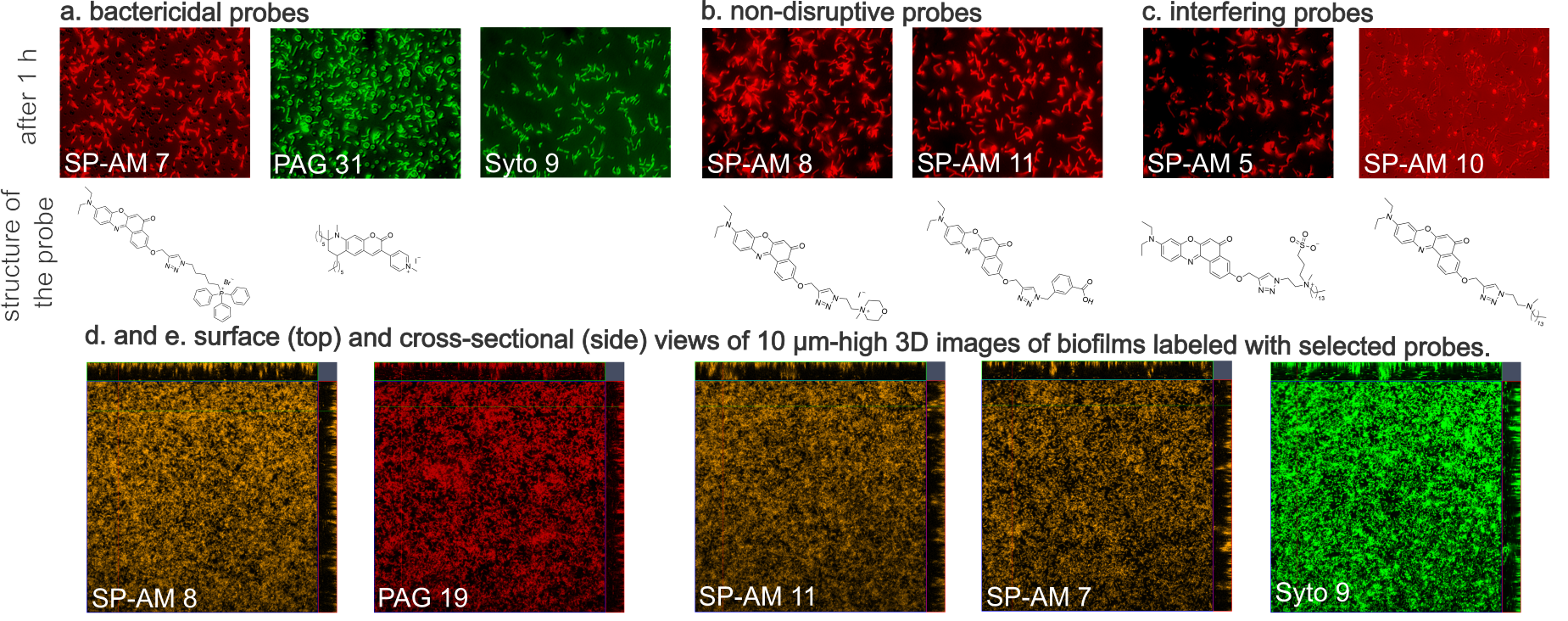
Evaluating novel lipophilic fluorescent probes for reliable biofilm imaging
- Post by: Jure Pohleven
- 21.October, 2025
- Comments off
A new methodological paper from the Microbial Glycobiology group presents a comprehensive evaluation of fluorescent probes for biofilm labelling, with careful consideration of how these probes affect bacterial physiology. This work, conducted in collaboration with the University of Ljubljana’s Faculty of Pharmacy and the Jožef Stefan Institute’s Department of Condensed Matter Physics, introduces a broad panel of novel probes tested on Listeria biofilms, our model organism.
Among the tested Nile blue, Nile red, and coumarin-based probes, some showed strong bactericidal effects, suggesting future potential as theranostic tools. Others interfered with biofilm attachment and development, making them less suitable for labelling purposes. However, a select group of probes enabled rapid, consistent, and non-disruptive labelling throughout biofilm growth, improving the accuracy and reproducibility of biomass measurements. Importantly, all effective probes altered the three-dimensional biomass distribution in biofilm images, which has significant implications for 3D structural analyses based on fluorescence imaging.
These findings highlight the necessity of evaluating fluorescent probes not only for their chemical and physical properties but also for their biological effects to ensure reliable biofilm imaging results. Supported by the Slovenian Research and Innovation Agency, this study paves the way for further development of vital probes that enhance microbial imaging in both fundamental biofilm research and applied microbiology. Full details are available in the published study: https://doi.org/10.1016/j.mimet.2025.107206.

